#Legal Metrology Stamping
Explore tagged Tumblr posts
Text
Legal metrology stamping and verification is a process that ensures the accuracy of weights and measures. This is important for consumer protection, as it helps to prevent fraud and misrepresentation in commercial transactions. The Legal metrology stamping act mandates that all weights and measures be stamped and verified by a government-approved test center. This process helps to ensure that consumers are getting the accurate amount of product that they pay for. in case of any notices, orders or non-compliance with the regulatory requirements. Reach out to ASC Group for more information.
0 notes
Text
ASC Group provides expert Legal Metrology services in Delhi, ensuring that measurement standards are met. Our professional team helps businesses obtain the necessary certifications to meet legal requirements. Trust ASC Group for all your Legal Metrology needs in Delhi.
#legal metrology Delhi#lmpc registration Delhi#lmpc certificate Delhi#lmpc consultant Delhi#legal metrology consultant in Delhi
0 notes
Text

Boosting Efficiency with New Industrial Weighing Solutions in Industrial Area Today, UP Scales successfully delivered and installed a pair of robust industrial weighing scales at a client location in Industrial Area. This installation includes a heavy-duty 3-ton capacity industrial scale and a 50kg platform scale with an impressive accuracy of 5gm.
Key Features of the Installed Scales: 1.) High Capacity and Accuracy: The 3-ton scale is designed to handle heavy loads with precision, while the 50kg scale offers accurate measurements for smaller items. 2.) Government-Certified Accuracy: Both scales are government-calibrated and stamped, ensuring compliance with legal metrology standards. 3.) Comprehensive Warranty: UP Scales offers a 1-year on-site warranty for peace of mind and minimized downtime. 4.) Free Same-Day Delivery and Installation: Experience the convenience of our free same-day delivery and installation services. By integrating these advanced weighing solutions into their operations, our client can streamline processes, reduce errors, and improve overall efficiency.
IndustrialWeighingScale #HeavyDutyScale #PlatformScale #GovernmentCalibration #IndustrialArea #Efficiency #UPScales
Contact us today to explore our comprehensive range of industrial weighing solutions and elevate your business operations. Order Online: https://upscales.buyweighingmachine.com/product-categories/crane-scale 9899008683 | https://buyweighingmachine.com/
#weighing scale#industrialweighingscale#industrial weighing scale#platformweighingscale#up scales#platform weighing scale
0 notes
Text
Price: [price_with_discount] (as of [price_update_date] - Details) [ad_1] Product Description High Capacity: This bench scale has a maximum capacity of 50kg, making it suitable for a wide range of weighing needs in shops, commercial establishments, and industrial settings. Durable Construction: Featuring a stainless steel platform with dimensions of 300*300mm, this scale is sturdy and built to withstand heavy use. Accurate Measurements: With an accuracy of 5gm, you can rely on precise measurements for your weighing tasks. Convenient Display: The LED green display is visible from both the front and back sides, ensuring easy readability from any angle. Additional Features: The scale comes with a lithium battery, legal metrology stamping, and a 1-year warranty for added peace of mind. In the box, you'll find the weighing scale, backgreel, power cord, and height-adjustable leg. [ad_2]
0 notes
Text
What are the additional declarations to be made in the LMPC certificate?
According to the Legal Metrology Act, any individual or company that installs a weighing or measuring device for commercial use must have it verified and stamped before use. This can be accomplished by submitting an online application to the Office of the Inspector of Legal Metrology in the relevant district or civil subdivision. Compliance with these criteria is critical to avoiding legal ramifications and ensuring fairness in business dealings.
The Weight and Measurement Certificate is a key document needed by the Legal Metrology Act. This certificate is issued by the appropriate authorities after they have verified and approved the weighing and measuring instruments used in business transactions. The certificate includes vital information such as the certificate holder's name and address, the make and model of the instrument, its capacity, and the dates of verification and expiration. A Weight and Measurement Certificate is required for every firm that uses weighing and measuring tools in its daily operations. It serves as documentation of legal compliance and ensures the accuracy of measurements collected during commercial transactions.
In a period of increased competition and consumer awareness, the Weight and Measurement Certificate is critical to preserving customer trust and confidence. Businesses must therefore guarantee that their weighing and measuring tools are routinely checked and approved by appropriate authorities in order to avoid legal penalties and retain their market reputation.
Importers must make the following declarations throughout the LMPC registration process in order to be eligible. Failure to declare them will render you ineligible to apply for LMPC registration.
Compliance with Packing Standards: Determine whether the packing meets the standard quantities established in Rule 5 of the Legal Metrology Rules 2011. Package Type: Determine if the package is a combination package, a group package, or a multi-piece package. Nature of the package: Whether it is a retail or wholesale package. Perishable Commodities or Food Items: Indicates if the package contains perishable commodities or food items. Export Details: Whether the packed things will also be exported outside of the country? Industrial Use: Whether the commodities are packed solely for specific industries as raw materials. Fast Food products: Determine whether the box contains fast food products. Special Formulations or Agricultural Products: Whether the shipment contains any schedule or non-scheduled formulations covered by the Drugs (Price Control) Order, or agricultural farm products weighing 50 kg or more. Premises ownership refers to whether the store, factory, or premises is owned or rented. Inspection history: Whether your premises were last visited by the W&M Department's inspector. Legal Challenges: Whether your company has been sued during the last three years for breaking Weights and Measures laws. If so, include the challan's date, among other details. Offence Details: The offences that are being contested, as well as whether or not they are compounded.
0 notes
Text
Equal Multipurpose Electronic Digital Kitchen Scale For Home (Max-5Kg)
Since 2001, Equal Follows A Simple Business Philosophy: To Devote Its Talent And Technology To Creating Superior Products And Services That Contribute To Better Working Culture And Environment. To Achieve This, Equal Sets A High Value on Its People And Technologies. The product is approved by the Dept. of Legal Metrology, Govt. of India, and comes with a Stamping & Verification Certificate.
Product details
Material & Color: It's Made with Acrylonitrile Butadiene Styrene, Sturdy And Durable, Shell Adopts The New Abs Environmental Protection Material. Heat Resistant And Anti-Fall with White Color.
Size & Capacity: Platform-Size: 16L x 20W x 3.1H Cm. Item-Wight:0.800Kg. Max-Capacity: 5Kg. Resolution: 1g.
Precise Weight: The Precision Of A Scale Is A Measure Of The Repeatability Of An Object's Displayed Weight For Multiple Weightings Of The Same Object
Power Supply: It Includes a 2x AAA Battery Power Supply Battery Is Rechargeable with 3 PIN Power Cable, Box Included Power Cable. Power Cable Support Up To 240V Current, Battery Backup Up To 15 Hours.
Assembly Instruction: No Assembly Required. It is an Already Connected Red Led Dual Display, Weighing PAN, Four Adjustable Legs, (Unit, Tare, Mode) Function Buttons, And an ON/OFF Button.
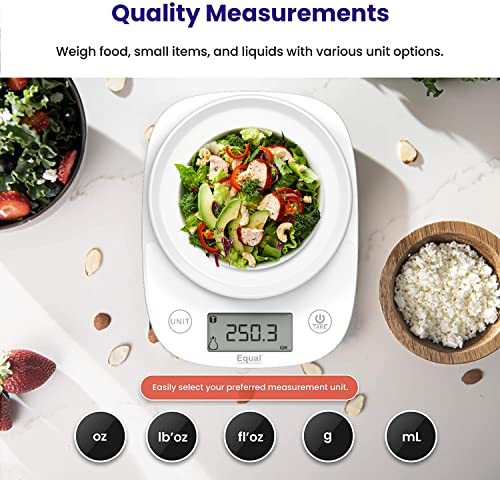
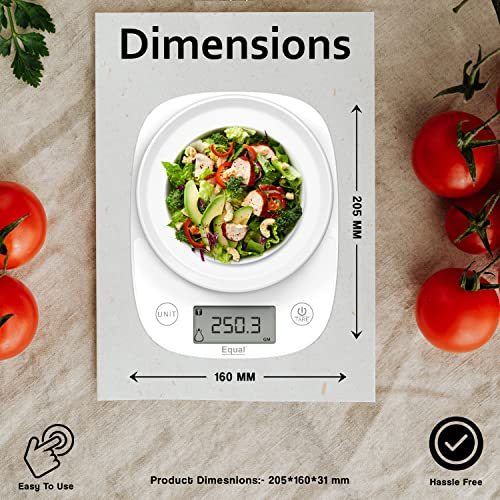
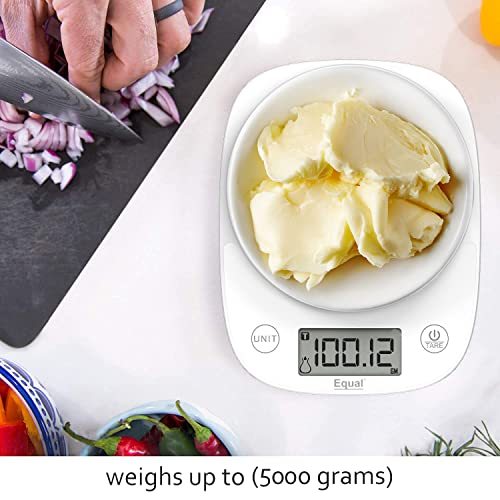
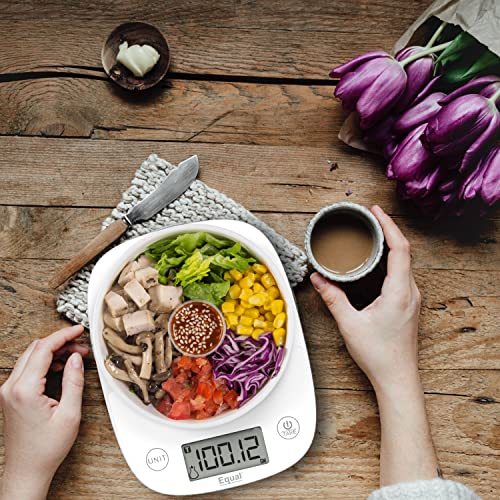
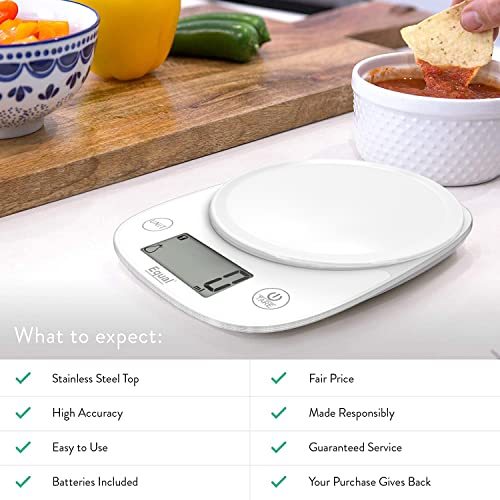
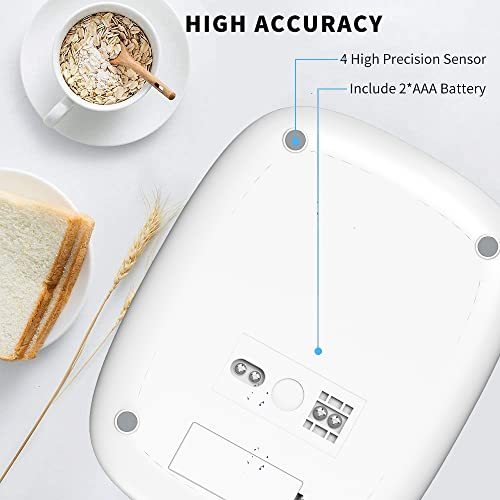
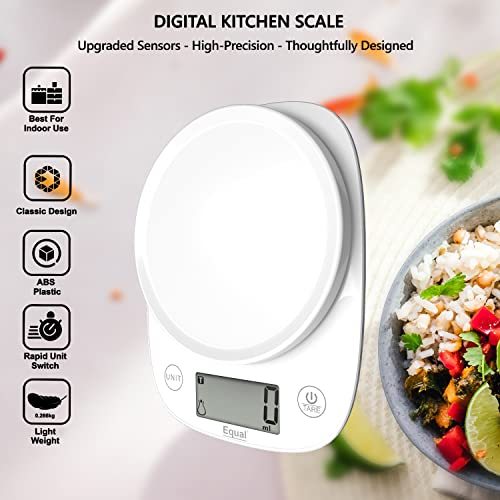

#Scale Solutions#Precision Weighing#Digital Scale#Healthy Living#Balance And Beyond#Digital Precision#Precision Health#Healthy Habits#weighningscale#weight#scale#kitchenscale#retailscale#healthyfood#homecooking#food#cooking#homemade#kitchenscales#retailscales#kitchenweighningscale
0 notes
Text
Uncovering Weights and Measures: An Overview of the Legal Metrology Act's Fundamentals
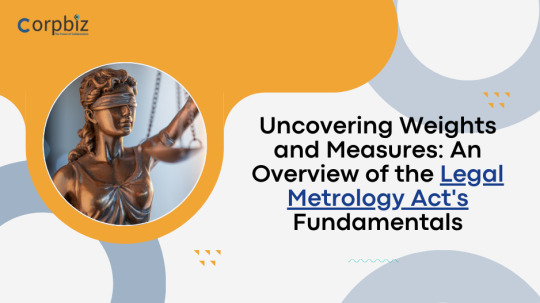
The Legal Metrology Act stands as a pivotal piece of legislation, ensuring fairness and accuracy in weights and measurements across various sectors. In this comprehensive blog post, we will delve into the fundamentals of the Legal Metrology Act, understanding its significance, key provisions, and the impact it has on businesses and consumers alike.
Understanding the Legal Metrology Act:
1. Background and Purpose:
The Legal Metrology Act, enacted to replace the Weights and Measures Act, aims to establish uniform standards of weights and measures. It ensures the credibility of measurements in commercial transactions, promoting fair trade practices and protecting the interests of consumers.
2. Applicability:
The Act applies to a wide array of products and services, ranging from packaged goods to industrial equipment. Every business involved in manufacturing, import, distribution, and sale must adhere to the provisions outlined in the Act.
Key Provisions:
1. Standardization of Weights and Measures:
The Act emphasizes the establishment and maintenance of standards of weights and measures by the government. This ensures consistency and accuracy in all commercial transactions.
2. Registration and Licensing:
Businesses dealing with weights and measures must obtain proper licenses and registrations. This promotes accountability and traceability in the supply chain.
3. Packaged Commodities Rules:
The Act includes detailed rules for packaging and labeling, specifying mandatory information such as net quantity, maximum retail price, and essential product details. This ensures that consumers are informed and protected from misleading practices.
4. Verification and Stamping:
Periodic verification and stamping of weighing and measuring instruments are mandatory. This ensures that the instruments used in trade are accurate and maintain precision over time.
5. Consumer Protection:
The Legal Metrology Act places a strong emphasis on protecting consumer rights. Businesses are obligated to provide accurate information, preventing fraudulent practices and ensuring consumers receive what they pay for.
Impact on Businesses:
1. Compliance and Legal Obligations:
Businesses must invest in calibrated instruments, maintain accurate records, and adhere to labeling requirements to remain compliant with the Act. Failure to comply can lead to legal consequences and damage a company's reputation.
2. Quality Assurance and Consumer Trust:
Adhering to the Legal Metrology Act builds consumer trust. Businesses that prioritize accurate measurements and transparent practices establish themselves as reliable and quality-focused entities.
Conclusion:
In conclusion, the Legal Metrology Act plays a pivotal role in regulating weights and measures, ensuring a fair and transparent marketplace. Businesses, large or small, must understand and comply with the Act's provisions to foster consumer trust, maintain legal standing, and contribute to the overall integrity of commercial transactions. As consumers become more informed and discerning, adherence to the Legal Metrology Act becomes not only a legal obligation but a strategic imperative for sustainable business growth.
0 notes
Text
Digital light weight platform weighing scales 100kgs
What Does Legal for Trade in Uganda Mean in Weighing Scales?
Legal for trade: Weighing up the requirements
In all commercial applications where a weighing scale is sold by weight, it is a legal requirement that weighing equipment Uganda be verified as ‘legal for trade’ or ‘trade approved’. In summary, this means that the equipment (from an individual scale to a complete pre-pack line) has undergone a stringent set of tests to ensure it is sufficiently accurate and fit for purpose.
If a trade approved unit undergoes any alteration or repair, it will require re-verification to ensure that the approval remains valid.
The following list provides examples of typical applications where a legal-for-trade scale might be required:
Determination of mass for commercial transactions.
Determination of mass for the calculation of a toll, tariff, tax, bon Uganda, penalty, remuneration, indemnity or similar type of payment.
Determination of mass for the application of laws or regulations; expert opinion given in court proceedings.
Determination of mass in the practice of medicine for weighing patients for the purposes of monitoring, diagnosis and medical treatment.
Determination of mass for making up medicines on prescription in a pharmacy and determination of mass in analyses carried out in medical and pharmaceutical laboratories.
Determination of price on the basis of mass for the purposes of direct sales to the public and the making-up of pre-packages.
Who governs this law?
Global:
Weights and measures authorities around the world are responsible for controlling legal for trade equipment and related legislation. Most countries globally (outside of the UGANDA) have adopted International Organization of Legal Metrology (OIML) requirements for weighing equipment. OIML has developed a set of international guidelines relating to the manufacture and Uganda of weighing and measuring instruments for legal metrology applications.
UGANDA specific:
In the UGANDA, requirements for legal for trade weighing equipment are laid out in Handbook 44 (Specific Tolerances and Other Technical Requirements for Weighing and Measuring Devices).
Equipment is certified under the National Type Evaluation Program (NTEP) which is developed through cooperation between the National Conference on Weights and Measures (NCWM) and the Weights and Measure division of the National Institute for Standards and Technology (NIST). NTEP is a process for the testing and evaluation of weighing equipment and critical components to ensure their compliance with Handbook 44.
According to NTEP, the term ‘Uganda ed for trade’ refers to devices that are Uganda for selling, purchasing, exchanging, Uganda today transfers, or establishing the cost for services or hire on the basis of a measurement.
By NTEPs terms, a ‘device’ is a weighing or measuring instrument. The term also refers to major elements
Who can certify a product as legal for trade?
This certification can only be given by a weights and measures inspector or an ‘approved qualifier’. An appropriate approved Uganda body evaluates the design and operation of the equipment to ensure that it conforms to the published guidelines/ requirements. It is also an offence to have, or Uganda, seriously incorrect equipment or to alter equipment that is incorrect after it has been stamped.
Uganda full links:
International Organization of Legal Metrology (Global)
https://www.unbs.go.ug//content.php?src=legal-metrology-department HYPERLINK "https://www.unbs.go.ug//content.php?src=legal-metrology-department&pg=content"& HYPERLINK "https://www.unbs.go.ug//content.php?src=legal-metrology-department&pg=content"pg=content
*Disclaimer: This document is intended to provide a basic introduction, it is by no means an exhative explanation of the regulations and should not be used as such. Those needing to fully understand the how the law impacts upon their business should refer to the links outlined in the ‘Useful links’ section of this page, or speak to one of our sales.
Thank you for allowing Accurate Weighing Scales (U) Ltd the privilege to serve you in advance.
For inquiries on deliveries contact us
Office +256 705 577 823, +256 775 259 917
Address: Wandegeya KCCA Market South Wing, 2nd Floor Room SSF 036
Email: [email protected]

0 notes
Text
Legal metrology registration is a mandatory process that ensures that all measuring instruments used in trade are accurate and reliable. Legal metrology Registration is also mandatory for all the manufacturer, importer, packer of the package commodity. This process is governed by the Legal Metrology Act and is implemented by the Department of Legal Metrology. The registration process involves testing and verifying the accuracy of the instrument, and once approved, the instrument is stamped with a seal of approval. It is also a legal requirement and non-compliance can result in penalties, fines, and even legal action. Get Legal Metrology Certificate from ASC Group with end-to-end consultancy from top professionals.
1 note
·
View note
Text
Product labeling and stamping are key aspects regulated under the Legal Metrology Act. This legislation establishes guidelines and requirements for labeling and stamping various products to ensure accuracy, transparency, and consumer protection. ASC Group assists in obtaining Legal Metrology Registration Certificate for weight and measurement and non-weight and measurement products. Legal metrology is mandatory for importer, manufacturer, repairer, dealer of all packaged commodities in India. It is highly recommended to consult with a Legal metrology Expert for the hassle -free process of obtaining a Legal Metrology Certificate.
0 notes
Text
ASC Group offers complete Legal Metrology services in Hyderabad. Legal Metrology services at our end are absolutely meeting regulatory standards. Our team can guide you for metrology licenses, inspections and obtainment of certifications according to your needs. Trust us with reliable legal metrology solutions.
#legal metrology hyderabad#lmpc registration hyderabad#lmpc consultant hyderabad#legal metrology consultant in hyderabad#legal metrology consultant hyderabad
0 notes
Text




Boosting Efficiency with a New Heavy-Duty Industrial Scale Installation in Noida Today, UP Scales successfully delivered and installed a robust 50kg heavy-duty industrial weighing scale in the Noida Industrial Area. This high-precision scale features a 600x600mm platform and incorporates high-accuracy load cells to ensure accurate and reliable weighing results. Key Features of the Installed Scale: 1.) High Capacity and Accuracy: The scale offers a capacity of 50kg with an accuracy of 5gm, making it ideal for various industrial applications. 2.) Durable Construction: Built to withstand rigorous industrial environments, the scale is designed for long-lasting performance. 3.) Government-Certified Accuracy: The scale is government-calibrated and stamped, guaranteeing compliance with legal metrology standards. 4.) Comprehensive Warranty: UP Scales offers a 1-year on-site warranty for peace of mind and minimized downtime. 5.) Free Same-Day Delivery and Installation: Experience the convenience of our free same-day delivery and installation services. By integrating this advanced weighing solution into your operations, you can streamline processes, reduce errors, and improve overall efficiency.
IndustrialWeighingScale #HeavyDutyScale #GovernmentCalibration #Noida #IndustrialArea #Accuracy #Reliability #Efficiency #UPScales
Contact us today to explore our comprehensive range of industrial weighing solutions and elevate your business operations. Order Now: https://upscales.buyweighingmachine.com/industrial-weighing-scale Website: https://buyweighingmachine.com/
0 notes
Text
How GST is Calculated in MRP with Example?
On July 1, 2017, the GST Calculator, a tax that had been discussed for a long time, took effect, which finally achieved the goal of One Nation, One Tax. This resulted in a change in the entire tax system for goods and services. Goods and Services Tax, or GST, is the name for all indirect taxes. Many traders and manufacturers are still unsure whether the GST on MRP products is fair. GST should be charged on MRP products, but people don't know if it should be done.
The importance of understanding what MRP means and how GST affects different products cannot be overstated. This blog has tried to explain everything about MRP so that you won't have to wonder if GST is included in MRP the next time you buy something or sell something. Let's start by explaining what MRP means and what it stands for.
MRP - What Does It Mean?
As the name implies, the maximum retail price a company can charge for a product sold in India is written on every product. Sellers and retailers cannot charge a price higher than the MRP listed on the packaging of a product, according to the Consumer Goods Act of 2006.
There has been a change in the actual prices of several goods and services since the implementation of the GST. The government has changed both the GST rates and MRP requirements for manufacturers and retailers.
GST Rate Changes and GST Start: MRP Rules
Each item that hasn't been sold should have its MRP updated as of the date when the new GST rate was implemented. Retailers or manufacturers need to stamp, stick on stickers, or print the new MRP on their products if this is the case. They must also meet the following requirements:
Likewise, the changed MRP cannot replace the original MRP. The original MRP should be transparently written on the item.
CGST Act, 2017 Section 140 (3) stipulates that the difference between the original MRP and the revised MRP cannot exceed the net price increase after taking the excess ITC available and the tax incidence into account. Furthermore, he thought traders could get credit, so it is important to remember that.
It is necessary for anyone seeking to change the MRP to place two ads in at least one newspaper and send the same information to the Director of Legal Metrology and each state's Controller of Legal Metrology.
Once GST is implemented, manufacturers are not required to notify the newspaper if the GST rate drops.
A sticker with the old and new MRP must be placed on the product regardless of what happens.
GST on MRP-based products
As a matter of fact, the secretary of the Department of Consumer Affairs, Avinash K. Srivastava, answered questions about the MRPs of goods under GST. He clarified that manufacturers and distributors had to print both the revised and original MRPs on the product. In addition, he said that if the price increases, a second notice will be sent, and both prices will be printed on the packaging of the product.
The GST Composition Scheme does not require dealers to show tax, but other vendors need to show how the costs are split if they are part of it. Since there isn’t yet a cess on goods, vehicles crossing state borders will still need to pay unless they have a national licence. 22 states have closed checkpoints so far. The cost is on the edges of intersections, not on the goods being moved. Therefore, that is the amount that should be paid.
To evaluate the pricing and supply of goods after GST was implemented, a Central Monitoring Committee was set up. Dr. Hasmukh Adhia, the Revenue Secretary, said at a press conference in Delhi: “We have set up a committee of 15 secretaries from departments that deal directly with consumers to keep an eye on commodity prices and client groups.” While there is no field work, officials will need to monitor four to five districts with the Link officer's help.
It is charged based on the transaction value, which is the price paid for goods or services over the course of the transaction. GST includes all duties, cess, fees, and other charges imposed by the government.
Calculation of MRP
To figure out any product's Maximum Retail Price, use the formula below:
Formula for calculating MRP:
An item's maximum retail price consists of its manufacturing cost plus the cost of packaging and presentation, the cost of stocking, the profit margin, the stockist margin, GST, shipping, retailer margin, and marketing and advertising costs.
Selling items for more than the MRP raises objections to the seller
If a store charges GST along with the MRP, customers have the right to file a complaint with the CBEC or one of the anti-profiteering commissions.
It is illegal for retailers to charge more than the MRP, which includes all taxes. Sellers and manufacturers are only allowed to charge less than the MRP, and they can also discount the MSRP.
As a customer, you should speak up if a retailer adds GST or any other tax to the MRP after a discount or without a deal.
Put GST on MRP products and get in trouble
A shop owner who sells items above the maximum retail price will have to pay a fine of Rs. 1 lakh or be jailed for one year.
Conclusion
For a product to be sold in India, the maximum retail price (MRP) is the highest price that the manufacturer can calculate and charge. Retailers can sell the items for less than the MRP but cannot sell them for more than the MRP. Customers can file a complaint against a store that charges GST on the MRP. In addition, the seller would face harsh penalties if found guilty.
0 notes
Text
Legal Metrology | Legal Metrology Registration | Legal Metrology Approval |Legal Metrology Consultant| Legal Metrology Certification | Legal Metrology Licence | Legal Metrology Registration in Delhi | PCR Licence | LMPCR Certificate | Import Licence by Legal Metrology
Legal Metrology is a department governed by the Government of India, Legal Metrology licence or legal metrology approval is applicable to all the instruments used to measure or weigh any substance or unit applicable in India Legal Metrology department or weight and measurement department is governed under the Ministry of Consumer Affairs and is responsible in issuing following approvals 1 Model Approval 2 Packaged Commodity Registration 3 Import Licence 4 Dealership Licence 5 Stamping of Products Legal Metrology Consultant or Legal Metrology Advisors are individuals or a group on individuals which help the importer and manufacturer procure these licences from the Legal Metrology Department
#Legal Metrology#Legal Metrology Registration#Legal Metrology Certification#Legal Metrology Licence#Legal Metrology Consultant#Legal Metrology Approval#Weight and Measurement Department#Legal Metrology Registration in Delhi#Legal Metrology Consultant in Mumbai#Legal Metrology Advisors#weight and measure certificate#PCR Licence#Package Commodity Registration#LMPCR Certificate#Import Licence by Legal Metrology
0 notes
Text
calibrated light duty platform weighing scales 100kgs, 200kgs, 500kgs
What Does Legal for Trade in Uganda Mean in Weighing Scales?
Legal for trade: Weighing up the requirements
In all commercial applications where a weighing scale is sold by weight, it is a legal requirement that weighing equipment Uganda be verified as ‘legal for trade’ or ‘trade approved’. In summary, this means that the equipment (from an individual scale to a complete pre-pack line) has undergone a stringent set of tests to ensure it is sufficiently accurate and fit for purpose.
If a trade approved unit undergoes any alteration or repair, it will require re-verification to ensure that the approval remains valid.
The following list provides examples of typical applications where a legal-for-trade scale might be required:
Determination of mass for commercial transactions.
Determination of mass for the calculation of a toll, tariff, tax, bon Uganda, penalty, remuneration, indemnity or similar type of payment.
Determination of mass for the application of laws or regulations; expert opinion given in court proceedings.
Determination of mass in the practice of medicine for weighing patients for the purposes of monitoring, diagnosis and medical treatment.
Determination of mass for making up medicines on prescription in a pharmacy and determination of mass in analyses carried out in medical and pharmaceutical laboratories.
Determination of price on the basis of mass for the purposes of direct sales to the public and the making-up of pre-packages.
Who governs this law?
Global:
Weights and measures authorities around the world are responsible for controlling legal for trade equipment and related legislation. Most countries globally (outside of the UGANDA) have adopted International Organization of Legal Metrology (OIML) requirements for weighing equipment. OIML has developed a set of international guidelines relating to the manufacture and Uganda of weighing and measuring instruments for legal metrology applications.
UGANDA specific:
In the UGANDA, requirements for legal for trade weighing equipment are laid out in Handbook 44 (Specific Tolerances and Other Technical Requirements for Weighing and Measuring Devices).
Equipment is certified under the National Type Evaluation Program (NTEP) which is developed through cooperation between the National Conference on Weights and Measures (NCWM) and the Weights and Measure division of the National Institute for Standards and Technology (NIST). NTEP is a process for the testing and evaluation of weighing equipment and critical components to ensure their compliance with Handbook 44.
According to NTEP, the term ‘Uganda ed for trade’ refers to devices that are Uganda for selling, purchasing, exchanging, Uganda today transfers, or establishing the cost for services or hire on the basis of a measurement.
By NTEPs terms, a ‘device’ is a weighing or measuring instrument. The term also refers to major elements
Who can certify a product as legal for trade?
This certification can only be given by a weights and measures inspector or an ‘approved qualifier’. An appropriate approved Uganda body evaluates the design and operation of the equipment to ensure that it conforms to the published guidelines/ requirements. It is also an offence to have, or Uganda, seriously incorrect equipment or to alter equipment that is incorrect after it has been stamped.
Uganda full links:
International Organization of Legal Metrology (Global)
https://www.unbs.go.ug//content.php?src=legal-metrology-department HYPERLINK "https://www.unbs.go.ug//content.php?src=legal-metrology-department&pg=content"& HYPERLINK "https://www.unbs.go.ug//content.php?src=legal-metrology-department&pg=content"pg=content
*Disclaimer: This document is intended to provide a basic introduction, it is by no means an exhative explanation of the regulations and should not be used as such. Those needing to fully understand the how the law impacts upon their business should refer to the links outlined in the ‘Useful links’ section of this page, or speak to one of our sales.
Thank you for allowing Accurate Weighing Scales (U) Ltd the privilege to serve you in advance.
For inquiries on deliveries contact us
Office +256 705 577 823, +256 775 259 917
Address: Wandegeya KCCA Market South Wing, 2nd Floor Room SSF 036
Email: [email protected]
https://averyweighingscalesuganda.wordpress.com/category/grain-moisture-metres
https://averyweighingscalesuganda.wordpress.com/category/animal-weighing-scales/

0 notes
Text
2000kg capacity heavy duty floor weighing scale hot prices from importer uganda
Weighing Accuracy of Accurate Weighing Scales in Uganda
A brief insight for weighing Accuracy for scales buyers in Uganda
Weighing accuracy
By scientific definition, the accuracy of a measurement system is how close a result comes to the true value or a standard.
In our daily life, when we see a measurement like a speed of 25 kmph on a speedometer, or a weight of 12.2 kg on a weighing scale, we regard this value as correct without thinking about the errors those values may have. It is a common perception that ‘what we SEE is the CORRECT & ACCURATE value’.
This perception is further strengthened in today’s ‘digital’ indication age, where instruments produce a direct readout of numeric values, removing the ambiguity of analogue indication such as needle/pointer of earlier times. However the fact remains that each measurement, whether done by an analog or a digital instrument, has an error and we cannot say how accurate a measurement is unless we know the true value to compare it with.
Weighing equipment as a ‘system’
A measurement system can have many components, but there is always at least one critical component which dictates and limits the overall accuracy of the measuring system.
In modern day electronic weighing systems, this most critical measuring component is the transducer which converts applied load into a proportionate electrical signal. The majority of weighing machines used for commercial purposes have strain-gauge based Load Cells as the transducer. The voltage signal generated is processed and converted into digital form by the weighing instrumentation, commonly known as ‘digitizer’, for displaying the weight and further use. The weighing system needs to be calibrated using standard weights before putting to use.
A weighing system cannot have accuracy more than the accuracy of load cell/s used in it.
The role of least count
All measuring instruments have a calibrated range known as ‘span’, with a Min. and a Max. limit. This range or span is a graduated scale and the minimum value of displayed graduation is the ‘least count’ or ‘resolution’ of the instrument.
For example: a weighing scale with a least count of 10 kg will show weight only in steps of 10 kg, i.e. if the weight of an object is measured as 1016 kg, the scale can show it either as 1010 kg or 1020 kg. Here it does not have any relation whether the measurement of 1016 kg was correct or not. It is only about displaying the result. The least count of a scale can only be 1, 2, 5, 10 and their multiples.
The least-count/resolution relates more to readability of a weighing instrument, rather than accuracy.
The Legal Metrology perspective
The majority of scales which we see and use everyday, such as weighbridges, platform scales, bench / counter scales etc, are classified as non-automatic weighing machines by Indian Legal Metrology. These are further classified into four accuracy classes – I, II, III and IV depending on permissible errors for a measurement, with class I being most accurate and class IV the least.
Most of the scales used for ‘legal for trade’ purpose are certified for min. class III.
All weighing machines used for trade purposes are required to be verified and stamped every year by Legal Metrology, according to their accuracy class.
The accuracy classes for scales
One important specification valid for class I and II only is that the accuracy of the scale can be 1, 2, 5 or 10 times the least count of the scale. For example: a scale of 10 kg x 0.1 g can have accuracy 10 times the resolution which is 1 g (10 x0.1 g) i.e. a reading of 5000.1 g may have an error of up to 1 g.
This specification is not applicable to Class III and Class IV machines. For these machines, the accuracy of readings is between 0.5x to 1.5x of the scale resolution, or 1x as an average (simplified for ease of understanding). For example: in a scale with 50000 kg x 10 kg, a reading of 25050 may have maximum error of 10 kg, i.e. the object’s true weight could be anywhere from 25040 to 25060 kg.
For class III machines, the accuracy is generally considered as +/- 1 division (least count).
International standards
OIML (International Organization of Legal Metrology) is the most followed standard internationally, subscribed officially by more than 120 countries including India. Additionally, there is NTEP (National Type Evaluation Program) standard which is primarily followed by USA & Canada.
OIML has defined accuracy classes for load cells (OIML R-60) as well as weighing instruments (OIML R-76) with their relationship as below –
Load cell accuracy class (R-60)
Weighing Instrument accuracy class (R-76)
Number of scale divisions
A
I
> 50,000
B
II
5,000 ~1,00,000
C
III
500 ~10,000
D
IV
50 ~ 1000
OIML stipulations attribute 50% of the error in a weighing system to the error in the load cells.
For a weighing instrument, the OIML compatibility checks between load cells and weighing scale include:
a) No. of certified load cell divisions are >= the weighing scale divisions
b) Load cell accuracy class corresponds to above table or higher
The international guidelines on weighing accuracy stress on importance to verify load cell accuracy to ensure that desired overall accuracy is achievable.
The practical application and ethical aspects
By now it should be amply clear that the load cell(s) used in a weighing scale should be able to deliver the accuracy in terms number of divisions, equal to or better than weighing scale divisions, to achieve desired accuracy.
Taking an example for a weighbridge of 50 t x 10 kg (i.e. 50000/10 = 5000 divisions), the load cell should be at least accurate and certified to 5000 divisions (OIML R-60 C5) or higher accuracy class. Similarly a platform scale of 60 kg x 20 g (i.e. 60000/20 = 3000 divisions) should be using a load cell certified for 3000 divisions (OIML R-60 C3) or higher.
Unfortunately the Indian Legal metrology, despite following OIML guidelines, is yet to specify rules for load cell certification. As a result, the market is brimming with cheap weighing scales using unapproved load cells and the least count of scale being often projected as ‘accuracy’.
However, companies in India with global standards and ethical practices, use OIML approved load cells for weighbridge applications corresponding to accuracy classes of scales manufactured by them.
Thank you for allowing Accurate Weighing Scales (U) Ltd the privilege to serve you in advance.
For inquiries on deliveries contact us
Office +256 705 577 823, +256 775 259 917
Address: Wandegeya KCCA Market South Wing, 2nd Floor Room SSF 036
Email: [email protected]
https://cranehangingscalesaccurate.wordpress.com/category/crane-scales/
https://electronicbalanceug.wordpress.com/category/crane-scales/
https://portablemoistureanalysers.wordpress.com/category/crane-weighing-scales/
https://heathscales.wordpress.com/category/crane-scales/

0 notes